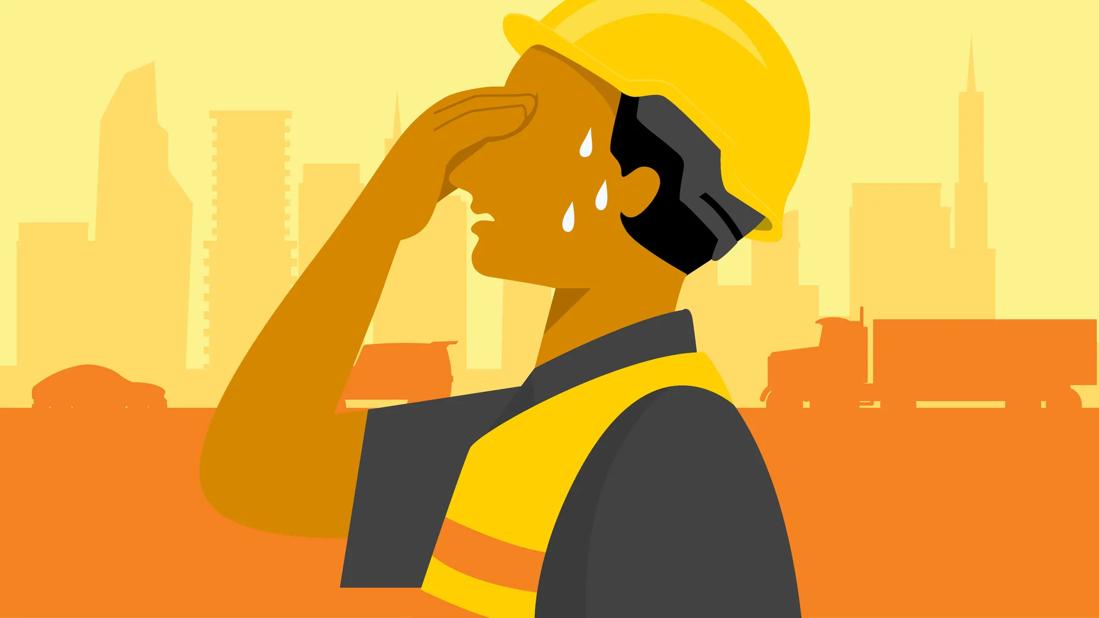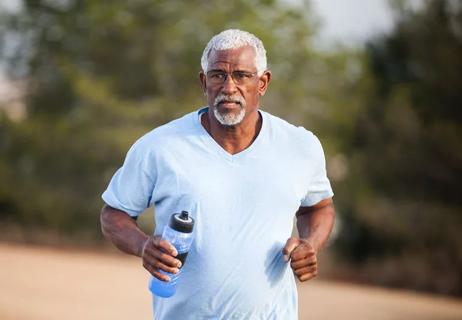Both heat illnesses can be life-threatening if left untreated

Sultry summer days might have you dreaming of fun in the sun. But those bright, sunny days can also have a dark side if you’re not careful.
Advertisement
Cleveland Clinic is a non-profit academic medical center. Advertising on our site helps support our mission. We do not endorse non-Cleveland Clinic products or services. Policy
“Heat illnesses can be very serious, and it’s important to recognize the symptoms,” says emergency medicine physician Thomas Waters, MD.
Heat stroke is the most severe form of heat illness, with primary symptoms that include confusion, altered mental status and a very high core body temperature above 104 degrees Fahrenheit (40 degrees Celsius).
Heat exhaustion is less dangerous, but can present with muscle cramps, headaches, dizziness, weakness, fatigue, nausea and vomiting. And there are other heat illnesses, too — not to mention the dangers of extreme sunburn.
Dr. Waters shares ways you can prevent heat exhaustion and heat stroke by recognizing the symptoms and responding appropriately.
Heat exhaustion and heat stroke are types of heat-related illnesses.
“People often talk about heat exhaustion and heat stroke as though they are separate things. But they exist on a spectrum from not-so-serious to a significant and life-threatening emergency,” Dr. Waters clarifies.
The spectrum of heat-related illnesses includes:
Advertisement
One way to think about heat-related illness is to recognize sweating as your body’s way of cooling itself down. Sometimes, on hot, humid days, sweating might not actually be enough to offer all the cooling your body needs. That’s especially true if you’re working out or doing physical work in hot and humid weather.
Heat exhaustion and heat stroke both cause your body temperature to rise. And that temperature spike goes hand in hand with several other symptoms.
Heat exhaustion and heat stroke are similar. And while one leads to another, both are equally dangerous when left untreated. Signs and symptoms of both include:
| Heat exhaustion | Heat stroke |
|---|---|
| High body temperature between 101 F (38.3 C) and 104 F (40 C). | High body temperature above 104 F (40 C). |
| Pale skin. | Dry, red skin. |
| Muscle cramps. | Inability to sweat. |
| Headaches. | Seizures. |
| Dizziness. | Dizziness or fainting. |
| Weakness and fatigue. | Slurred speech. |
| Rapid breathing and increased heart rate. | Hallucinations and altered mental state. |
| Nausea and vomiting. | Confusion, aggression or agitation. |
| Heat exhaustion | |
| High body temperature between 101 F (38.3 C) and 104 F (40 C). | |
| Heat stroke | |
| High body temperature above 104 F (40 C). | |
| Pale skin. | |
| Heat stroke | |
| Dry, red skin. | |
| Muscle cramps. | |
| Heat stroke | |
| Inability to sweat. | |
| Headaches. | |
| Heat stroke | |
| Seizures. | |
| Dizziness. | |
| Heat stroke | |
| Dizziness or fainting. | |
| Weakness and fatigue. | |
| Heat stroke | |
| Slurred speech. | |
| Rapid breathing and increased heart rate. | |
| Heat stroke | |
| Hallucinations and altered mental state. | |
| Nausea and vomiting. | |
| Heat stroke | |
| Confusion, aggression or agitation. |
Anyone can experience these heat illnesses in hot, humid conditions — and it’s important to not just rely on your body temperature for self-diagnosis. If you experience any of these symptoms, get out of the sun, try to bring your temperature down and seek medical attention if your symptoms continue to get worse.
Another important thing to consider is that the following factors can increase your risk of developing these heat illnesses:
If you have any signs of heat exhaustion, get out of the heat as quickly as you can. Drink some water to rehydrate and take steps to bring down your body temperature. It can also be helpful to immerse yourself in a tub of cold water to bring your temperature down quickly.
“To cool your body, apply ice packs to the neck, armpits and groin,” Dr. Waters advises. “You can also squeeze a rag of cool water over yourself to help you cool down.”
If you continue to feel sick — or notice signs of heat stroke, especially neurologic symptoms such as confusion, stumbling or clumsiness — call 911 or your local emergency hotline. Emergency room professionals have several methods to cool your body quickly and will monitor you for complications of overheating, such as damage to organs.
“Heat stroke is an emergency,” emphasizes Dr. Waters. “It can become deadly very quickly. Heat stroke isn’t something you can just push through, no matter how strong you are. The most important thing you can do is pay attention to the warning signs and listen to your body.”
Heat exhaustion and heat stroke are no joke. But even when it’s sweltering outside, there are ways to stay safe:
Advertisement
“Heatstroke is preventable, as long as you make the right moves,” says Dr. Waters.
Advertisement
Learn more about our editorial process.
Advertisement

As temperatures increase, so does the need for safety precautions

Aging poses unique challenges in higher temperatures

Anyone can get heat illness, so watch for signs that you need to cool down

Bleeding is a risk and warrants taking care, but the reward of this lifesaving medication is great

Severe and debilitating headaches can affect the quality of your child’s life

Type 2 diabetes isn’t inevitable with these dietary changes

Applying a hot or cold compress can help with pain